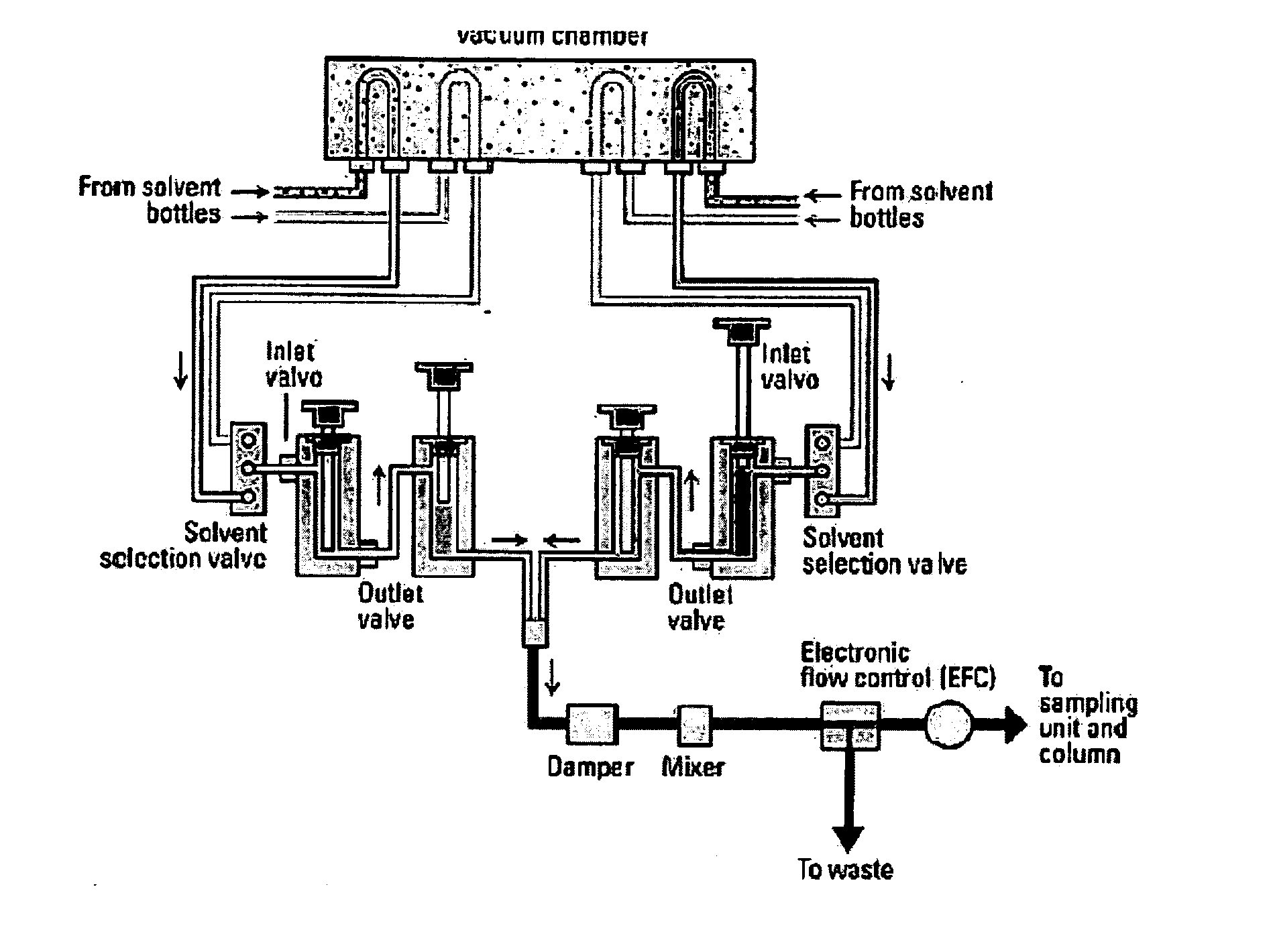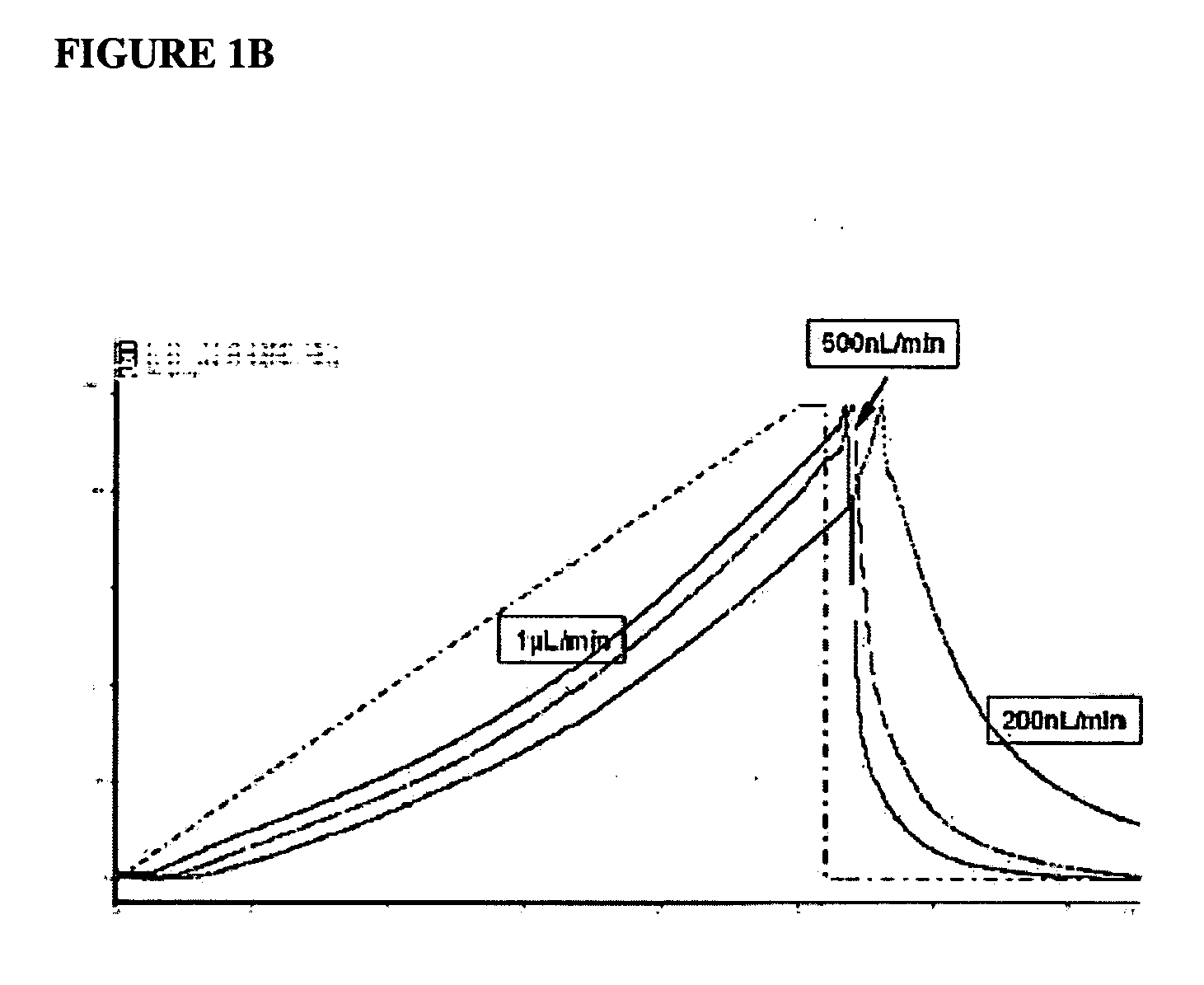Devices, systems and methods for liquid chromatography
a liquid chromatography and liquid chromatography technology, applied in the field of liquid chromatography devices, systems and methods, can solve the problems of extremely low required mobile-phase flow rate through the columns, particularly severe limitation, and inability to achieve gradient chromatography at such a flow ra
- Summary
- Abstract
- Description
- Claims
- Application Information
AI Technical Summary
Benefits of technology
Problems solved by technology
Method used
Image
Examples
example 1
[0156] An Agilent 1100 CapPump running at 4 μL / min was connected to an Agilent 1100 μ-well plate autosampler for sample loading on the μ-chip. During sample loading the LC pump was set to constant pressure of 60 bar and the measured flow rate was 3 μL / min. The restriction at the split point was adjusted such that there is 300 nL / min flow through the LC channel and 2.71 μL / min through the split capillary to waste. 2 min after the LC run started, the chip valve was switched to injection / splitless position. The LC mobile phase gradient delivered by an Agilent 1100 nanoPump was set to constant flowrate of 300 nL / min. The experimental condition for the on-chip LC channel was a 40 minute gradient from 2% B to 42% B. At 42 min, the chip valve was switched to load / split position, and the LC pump was set to a constant pressure of 60 bar again. In such a configuration, the delay time between LC pump and the head of the LC column was reduced by ten-fold. Now the autosampler is ready to load ne...
PUM
 Login to View More
Login to View More Abstract
Description
Claims
Application Information
 Login to View More
Login to View More - R&D
- Intellectual Property
- Life Sciences
- Materials
- Tech Scout
- Unparalleled Data Quality
- Higher Quality Content
- 60% Fewer Hallucinations
Browse by: Latest US Patents, China's latest patents, Technical Efficacy Thesaurus, Application Domain, Technology Topic, Popular Technical Reports.
© 2025 PatSnap. All rights reserved.Legal|Privacy policy|Modern Slavery Act Transparency Statement|Sitemap|About US| Contact US: help@patsnap.com



